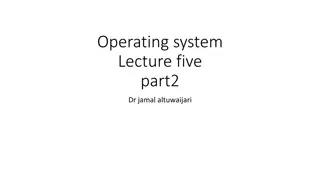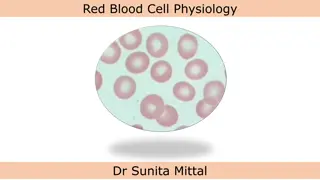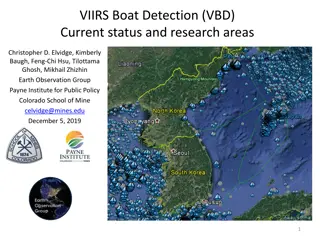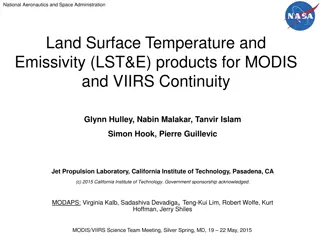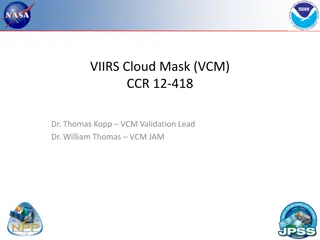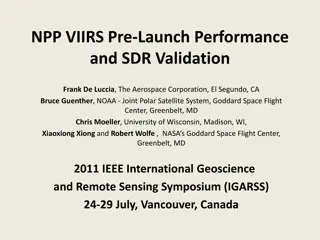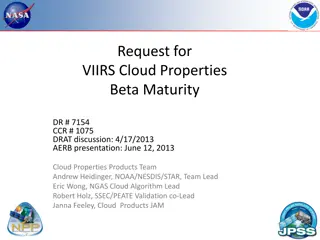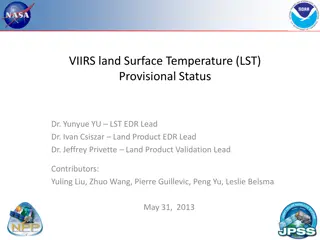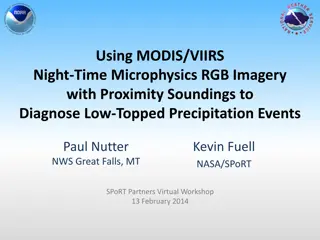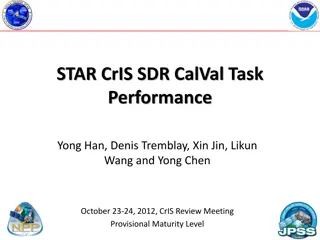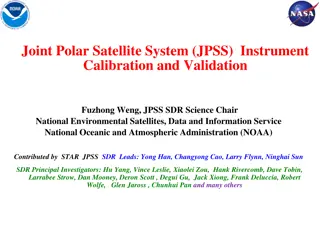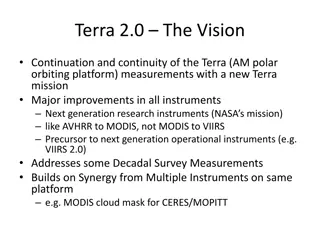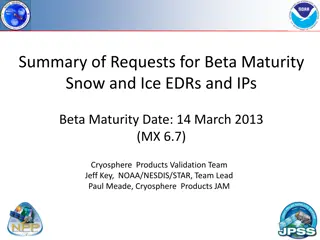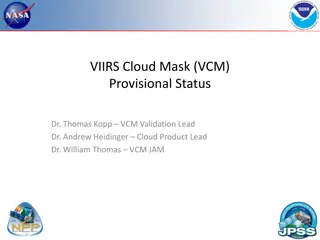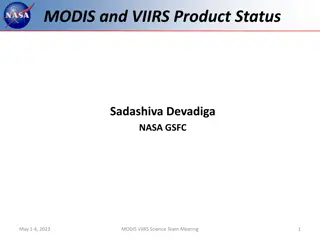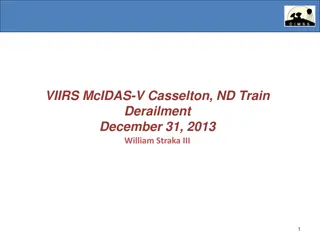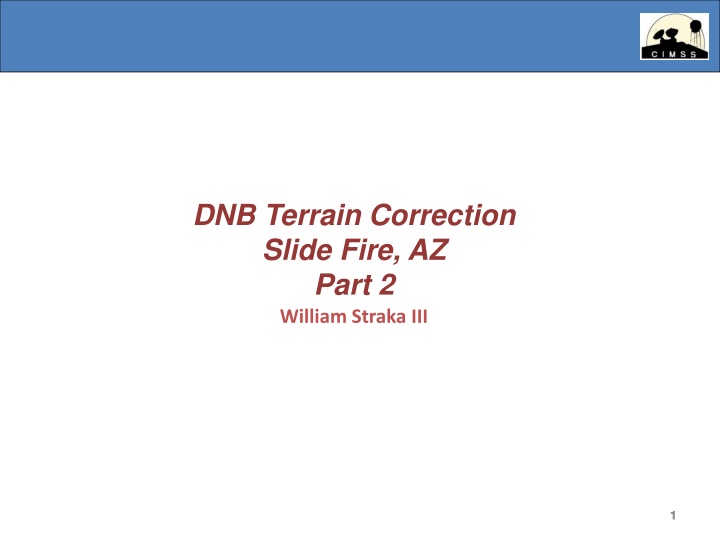
Terrain Correction Slide Fire in Arizona: Data Analysis by William Straka III
Explore the implementation of Terrain Correction in the Slide Fire case in Arizona, featuring images and analysis from May 24-26, 2014. Witness the impact of Day Night Band observations and the matching of thermal, NIR, and DNB emissive sources. Dive into the visualizations and animations provided for a comprehensive understanding of the data.
Download Presentation

Please find below an Image/Link to download the presentation.
The content on the website is provided AS IS for your information and personal use only. It may not be sold, licensed, or shared on other websites without obtaining consent from the author. If you encounter any issues during the download, it is possible that the publisher has removed the file from their server.
You are allowed to download the files provided on this website for personal or commercial use, subject to the condition that they are used lawfully. All files are the property of their respective owners.
The content on the website is provided AS IS for your information and personal use only. It may not be sold, licensed, or shared on other websites without obtaining consent from the author.
E N D
Presentation Transcript
DNB Terrain Correction Slide Fire, AZ Part 2 William Straka III 1 1
Background IDPS Mx8.4 was implemented on 22 May, 2014 starting with the ~14:40 GMT observation time. One of the key features is Terrain Correction is implemented for the Day Night Band The TC latitude/longitudes are variables in the GDNBO files and not a separate file. This means thermal, NIR and DNB emissive sources should now match up in all regions NDE provided test case over Iceland as so users could adjust their scripts/code accordingly. We wish to acknowledge their help in this The nightly McIDAS-V was ready before (21 May 2014) the TC navigation was available within the GDNBO files.
Test case Test case is the Slide Fire in Arizona Cases from 24-26 May are shown 24 May 2014 is near nadir, others progress to the left of the scan Arrow is located at roughly an edge in the the M13 band (terrain corrected) and in the same place for all images for a given time stamp Some slides have animations, so use slide show
24 May 2014, 0914Z M13 3.9 m Slide
24 May 2014, 0914Z M10 1.6 m
24 May 2014, 0914Z DNB NonTC
24 May 2014, 0914Z DNB Terrain Corrected
24 May 2014, 0914Z DNB non-TC, M10, M13
24 May 2014, 0914Z DNB_TC, M10, M13
25 May 2014, 0855Z M13 3.9 m Slide
25 May 2014, 0855Z M10 1.6 m
24 May 2014, 0914Z DNB NonTC
25 May 2014, 0855Z DNB Terrain Corrected
25 May 2014, 0855Z DNB non-TC, M10, M13
25 May 2014, 0855Z DNB_TC, M10, M13
26 May 2014, 0835Z M13 3.9 m Slide
26 May 2014, 0835Z M10 1.6 m
26 May 2014, 0835Z DNB NonTC
26 May 2014, 0835Z DNB Terrain Corrected
26 May 2014, 0835Z DNB non-TC, M10, M13
26 May 2014, 0835Z DNB_TC, M10, M13
Observations All three scenes are cloud free As can be seen the non-terrain corrected geolocated DNB image of Slide Fire is clearly shifted from the M10 and M13, both which are terrain corrected, hot spots to varying degrees The terrain corrected DNB geolocation shifts the fire inline with the hot spots indicated in the M10 and M13 band data
Conclusions These three cases show the amount of variation in the non-terrain corrected data, depending on what part of the scan the fire is located. Largest shift is when it is on the edge of scane. It appears that the Terrain Corrected navigation correctly shifts fires in-line with thermal observations. Based on this, McIDAS-V 1.5 beta appears to correctly use the terrain corrected navigation, if it is available. In addition it is backward compatible to data without the TC navigation.


